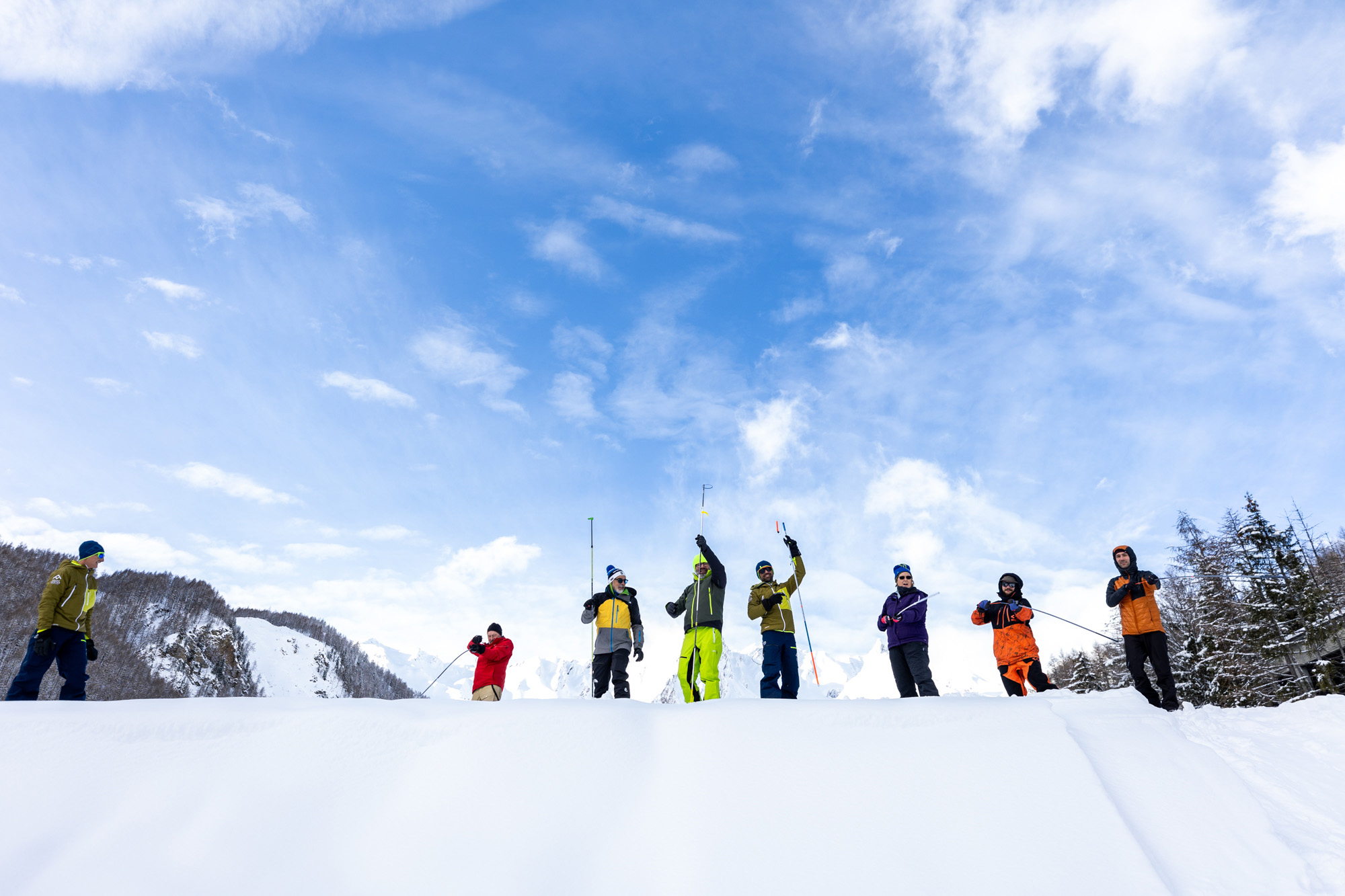By: Evi Garbolino
Ortovox Safety Academy: why it’s important to participate
Recently, ski mountaineering and freeriding have seen an increase in enthusiasts increasingly attracted to high altitude and off-piste skiing. These sports offer room for personal growth and exploration, but they require specific knowledge of safety equipment and responsible management of risks related to the environment in which one moves.
Ortovox Safety Academy, in collaboration with UIAGM-certified mountain guides, is now bringing an alpine-wide series of events dedicated to safety in the alpine environment that we experienced and tell you about here.
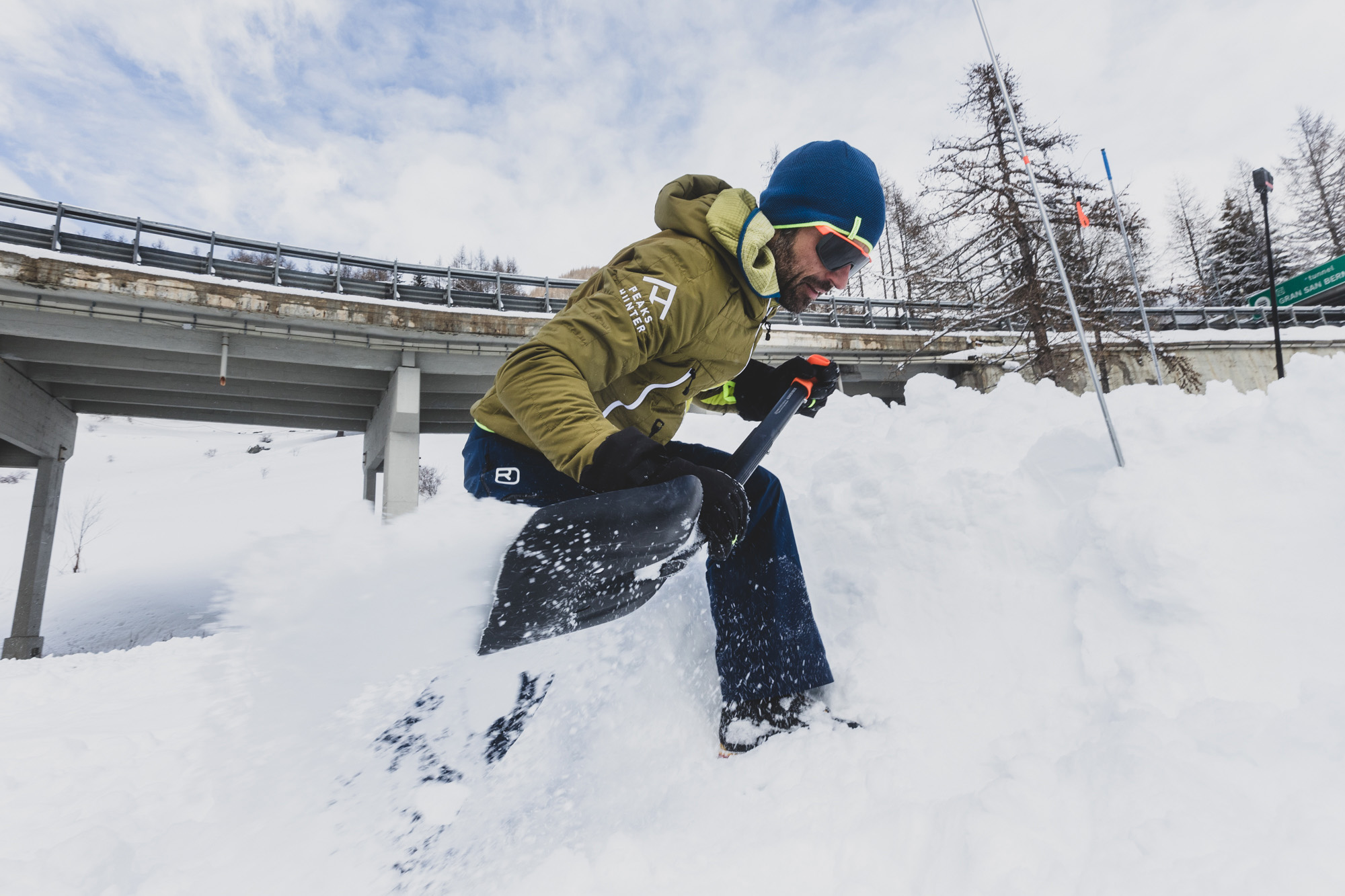
Ortovox Safety Academy: what is it all about?
Educational modules lasting one, two or three days of training dedicated to ski mountaineering enthusiasts: the new Ortovox “Training” and “Tour&Training,” offered in Basic and Advanced formulas, are created in collaboration with UIAGM-certified mountain guides. A mountain safety training campaign that Ortovox has been carrying out now since 2008 with the support of safety experts, in the common goal of raising awareness and preparing skiers through theoretical courses and training modules in the field.
Ortovox’s strategy definitely raises the level of didactics of classic training workshops: available are not only comprehensive paperback materials, but also instructional videos, interviews with experts, as well as purpose-built tools (such as the 3D Berg SAM) perfect for making information captivating and more technical notions immediately understandable. Particularly during the Ortovox Safety Academy days, the first theoretical part and some practical exercises in an ARTVA camp is followed by an outing in the environment with in an actual hike. There, with a short itinerary among slopes and moderate technical difficulties, participants will be able to observe potential risk factors up close, become familiar with the off-piste terrain, and most importantly, gain awareness of the real complexity of assessment aspects. Last but not least, the fact that you can test yourself under the supervision of security experts, receiving immediate feedback for improvement.
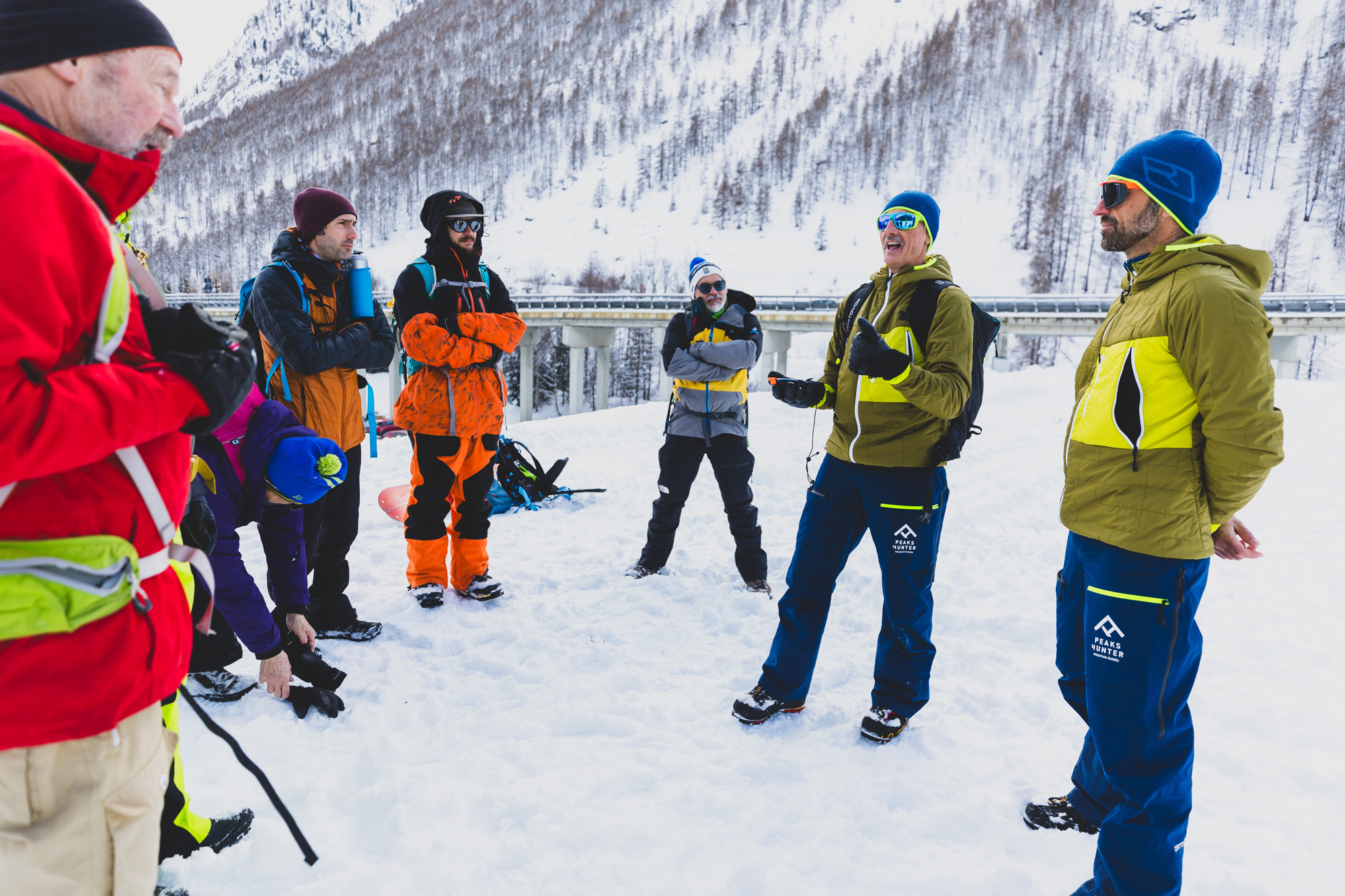
Great St. Bernard Valley, Step 1 – Training
The appointment with Peakshunter Mountain Guides, Ortovox’s new regional ambassador, is in the Great St. Bernard Valley, freeride mecca and of Aosta Valley ski mountaineering. An A.R.T.VA research camp was set up for the occasion just a stone’s throw from the Crevacol ski lifts and ski area. But before the field practice, some theory with slides from Lab Snow to address the basics of avalanche risk management.
You may have heard of the survival curve,” Elis explains. but perhaps few know that after 15 minutes that curve drops exponentially: it is in this time frame that action is needed! Keeping calm is very difficult in these situations, even for the most experienced. When detachment from a slope occurs, often those swept away are still alive, and self-rescue is essential for them to be found and brought to safety.
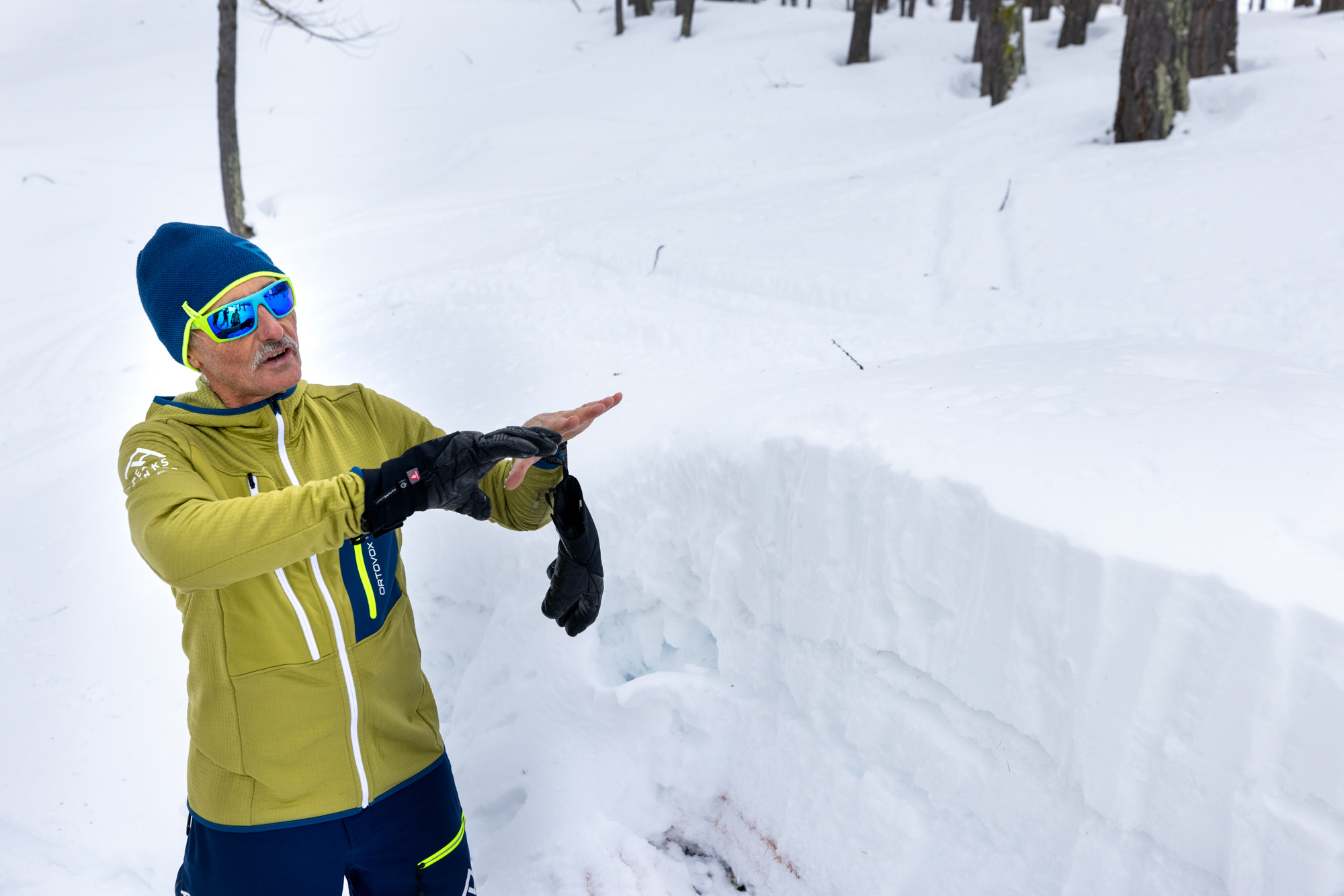
We then move to Crévacol locality and divided into small groups we start the research test; we immediately understand that there is a big difference between saying and doing! Although the search ground is an artificially constructed field with no slope and a homogeneous appearance, the recent snowfall has made the snowpack soft but patchy: sinking happens, running is difficult, and fatigue makes searching complicated.
We move along the 20-meter greeks indicated by the displays, without losing concentration. How exciting to lock onto the signal and feel the distance decreasing! We reduce speed and approach the ground to the presumed point of burial. We give way to teammates who have already extracted and mounted the probe to begin exploring the terrain. Found it! The probe marks about 90 cm: we are probably right on top of our overwhelm.
The guides explain that in such cases it is best to leave the probe where it is without moving it, backing off for a distance of about 1.5 times the burial depth so as not to add additional weight on top of the victim and then proceed with the excavation. We have available an extendable Pro Alu III shovel, which can be converted to hoe mode if needed. After 12 minutes we locate the missing person, but we still have to dig!
We realize that time really goes by quickly in these situations and that our survival curve is already nosediving.
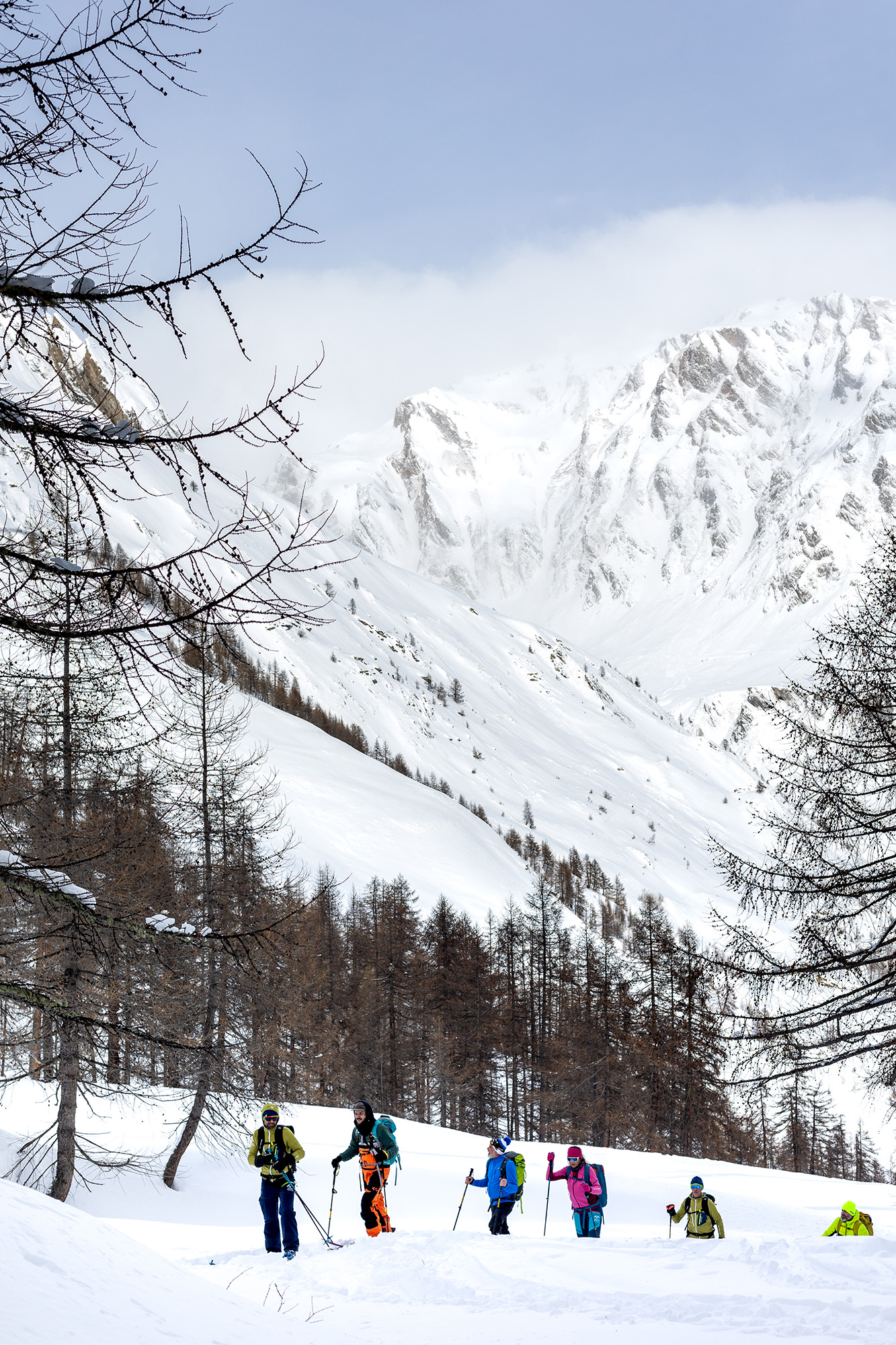
Another 11 minutes pass. On average it takes 9 to 12 minutes to dig a meter of fresh snow. My companions take turns so as to preserve strength. This is it! Twenty-three minutes have passed and we are exhausted, all three of us. Who knows if in a real situation we would have been able to act, but one thing is certain: it took us too long to find the minimum position and start the survey. Elis and Claudio explain that the only way to learn how to best handle research is practice, lots of practice. Ok That’s why Ortovox courses don’t just include a “Training” part. but they also leave room for “Tour” for a more truthful simulation.
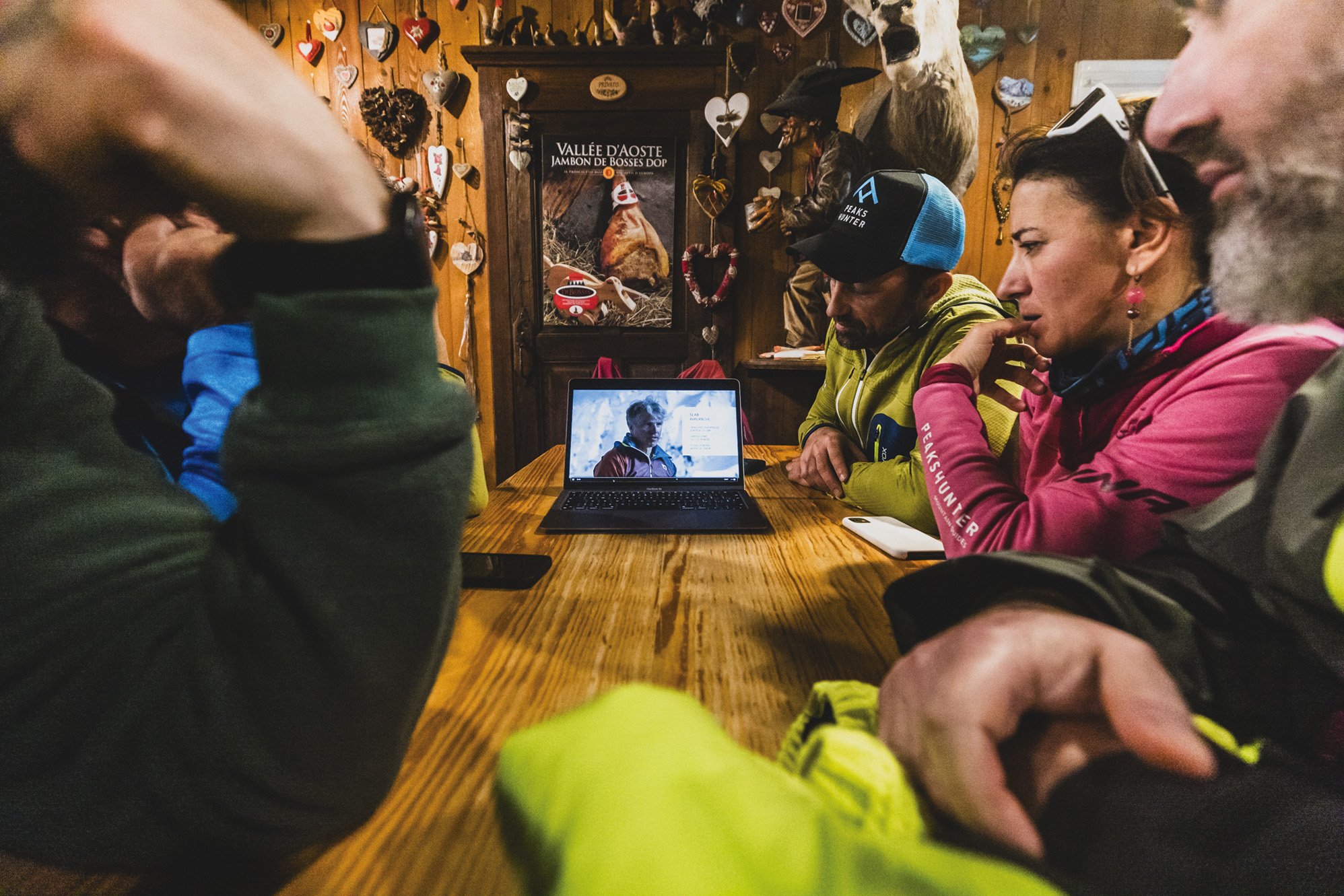
Step 2 – Tour
The next day’s departure is from the square in Crévacol in the direction of Gran Créton (3,000 mslm), also in the Great St. Bernard Valley.
Before putting on the skis we check the avalanche bulletin making our assessments and exchanging a few thoughts out loud. Risk 3 marked out of 5, which the Mountain Guides explain is where the highest number of accidents occur. We then check that everyone has personal emergency supplies with them and perform the group check before leaving. We enter the woods leading toward Col Serena, noting that the snow is powdery and that the risk of avalanches, though present, is minimal. This is where Elis explains how to recognize the slope of the terrain with the use of our sticks (tricks of the trade!). Above 30° the risk of detachment rises. Before leaving the forest, we find a spot where snow layering is clearly visible-Claudio takes the opportunity to show us the different types of snow in overlapping layers after previous snowfalls.
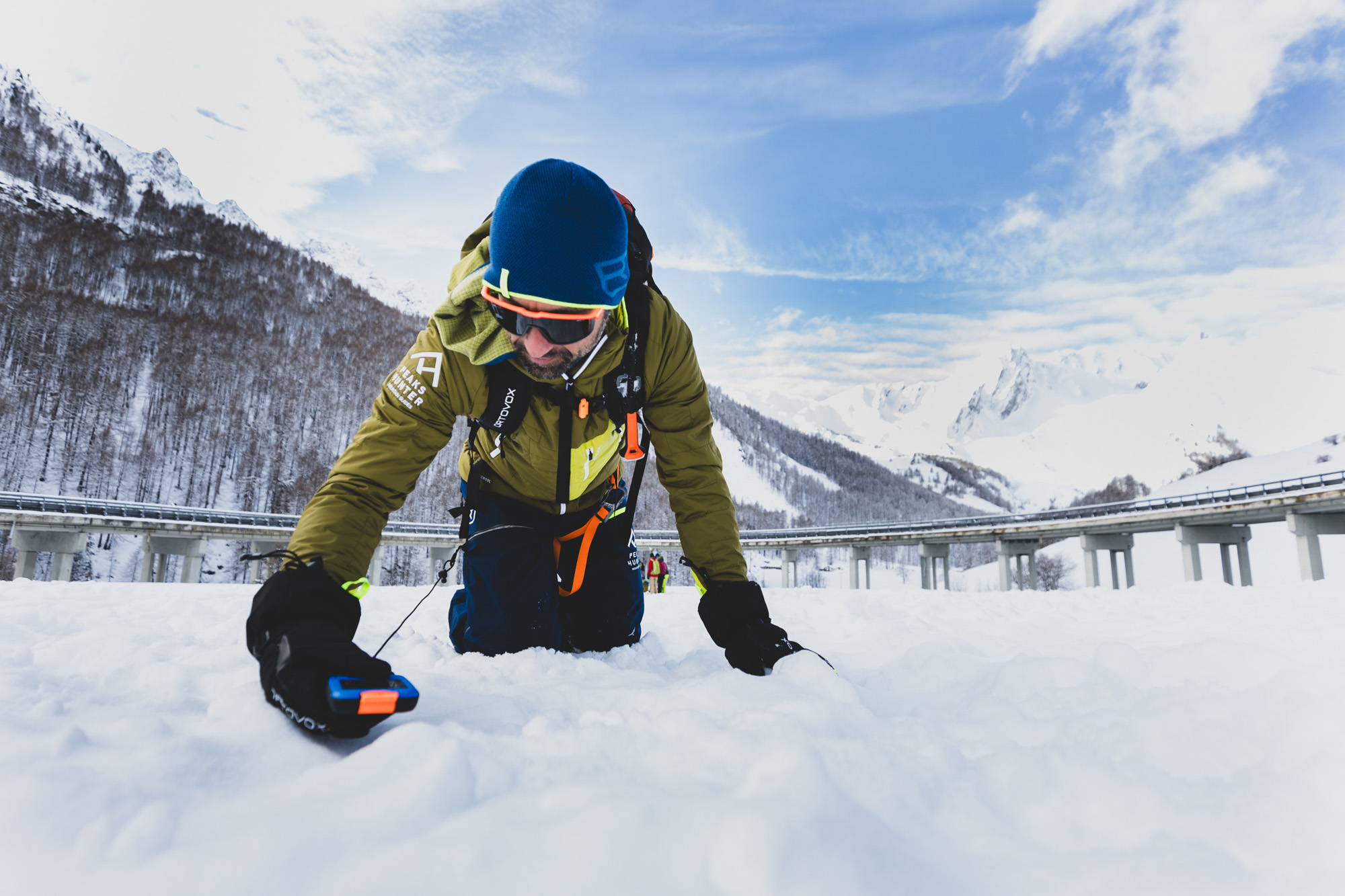
We continue to more open slopes and analyze wind action together. The snow is changing and it is actually noticeable! Crunching under skis and crusting are two clearly recognizable signs. We stop above some huts, and the guide points out the presence of numerous detachments along the steepest slopes. They are mainly weak cohesion avalanches due to the slope. Once at the top we remove the skins and prepare for the descent. The beautiful powder from the last snowfall chases away all thoughts and the adrenaline rises! Elis and Claudio stop us: pointing out changes in the slope of the terrain and pointing out the snow. In fact, as harmless as the situation seems the concrete dangers exist, we had not noticed them. “No matter how much fun we have, the level of attention must be maintained even during the descent. Never all at once and always be clear in your assessment.”
The field trip is over, the course is not. Together we look at some interviews in the Lab Snow section of the Ortovox website, featuring some testimonials from those involved in avalanches.
I return home with a wealth of important experience that this training weekend gave me, along with a great realization: basic theoretical knowledge is not enough to replace comprehensive first aid training. Every sportsman should practice during a course that includes teaching proper use of the search device and first aid techniques. Ski mountaineering is a captivating sport that allows you to get in touch with nature at a higher level of perception (and risk!). It allows us to reach wild places and unexplored spaces, chasing away thoughts of the hectic pace of our time, but at the same time it can lead us into dangerous situations. Therefore, being prepared and being aware is at least as essential as being trained to intervene in the crucial ways and times to ensure survival in an avalanche.
Prevention is definitely the best way to protect yourself, and Ortovox courses, thanks to the support and professionalism of mountain guides, are an opportunity for growth and training within everyone’s reach.
